#shijo dori
Photo
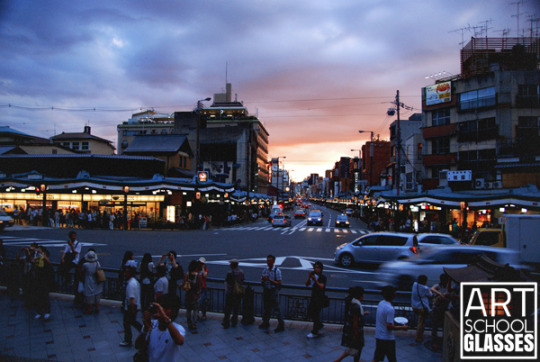
Looking down Shijo Dori
Kyoto, Japan
3 notes
·
View notes
Text
The Shijo-Dori underground passage in Kyoto.
202 notes
·
View notes
Text

A statue of Izumo no Okuni (c. 1578 - c. 1613), the creator of Kabuki, underneath the Shijo-dori Bridge on a dry section of the Kamo Riverbed in Kyoto, in the spot where she began performing the new style of theatre with an all-female troupe. Dressed as men, they performed both serious and satirical works, some of which lambasted the samurai classes. As the form grew in popularity, the Shogun outlawed women performing Kabuki, leading to the tradition of the onnagata, men who performed as women. (Photograph by Robbie Sugg, 2006).
8 notes
·
View notes
Photo
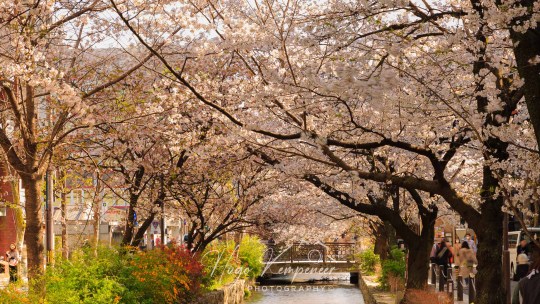
One of Kyoto’s favourite Cherry blossom spots is this picturesque street along the Takase River in the heart of Kyoto! You can walk and enjoy the cherry trees along the embankment from Nijō-Kiyamachi to Jujo Dori, although that would be quite a walk. The central part is between Sanjo Dori and Shijo Dori. There are many bars, restaurants, and shops in this part of Kyoto, and with patience, you can spot some Maiko strolling along in colourful kimonos.
#Inabata Katsutaro#Japan#Kiyamachi-Dōri#Kyoto#Sakuma Shōzan#Suminokura Ryōi#Takase River#Toyotomi Hideyoshi#Ōmura Masujirō#佐久間 象山#大村 益次郎#木屋町通#稲畑勝太郎#角倉 了以#高瀬川
9 notes
·
View notes
Photo

I didn't get the best picture of the sign, so there may be errors in the transcribed Korean text.
新京極
北は三条通から南は四条通に至る約五百メートルのこの通りを新京極通といい、通り各平安京の最も東に位置した東京極大路(現在の寺町通)の東側に新しく造られた通りであることに由来する。
天正年間(一五七三〜一五九ニ)、豊臣秀吉が市中の多くのを寺院を寺町通に集めたことに伴い、その境内が縁日の舞台として利用され、周辺は見世物や催し物を中心に発展するようになった。
明治五年(一八七ニ)、このことに注目した京都府参事槇村正直は東京還都で衰えていた市民の士気を盛り上げるべく、寺院の境内を整理して、そこに新たな通りを造った。新京極通の誕生である。
明治十年(一八七七)頃には芝居座、浄瑠璃、寄席などの興行場や飲食店などの多くの店舗が建ち並び、明治三十年代には東京の浅草、大阪の千日前とともに、日本の三大盛り場として知られるようになった。
現在も、修学旅行性をはじめとする多くの観光客や買物客でにぎわう、京都を代表する繁華街である。
上方落語の始祖・安楽庵策伝が住職を務めた誓願寺、和泉式部の寺として知られる誠心院や、西光寺、蛸薬師堂妙心寺、安養寺、善長寺、錦天満宮、染殿院という由緒ある七つの寺院と一つの神社が通りの歴史を今に伝えている。
京都市
Shinkyogoku
Shinkyogoku-dori street, which is approximately 500 meters long, runs between Sanjo-dori Street in the north and Shijo-dori Street in the south. The name Shinkyogoku (literally means the new edge of the capital) was given because it was constructed on the east side of Higashi Kyogoku Oji (literally means means the boulevard on the eastern edge of the capital), which is presently called Teramachi-dori.
The Japanese warrior commander Toyotomi Hideyoshi relocated a number of temples from other places in town to Teramachi-dori Street. The precincts of the temples were used as stages of fairs then, and the vicinity of Termachi-dori Street developed as an area focusing on shows and events. In 1872, Kyoto Vice-Governor Masanao Makimura gave an eye to the area. He rearranged the precincts of the temples and built the new street in order to enliven the morale of the residents of Kyoto that had declined as a result of the relocation of the capital to Kyoto. This is how Shinkyogoku-dori Street was born.
Around 1877, numbers of facilities, such as playhouses, Joruri theatres (traditional Japanese puppet theatres), variety halls, and restaurants lined the streets. Later, this area along with Asakusa in Tokyo and Sennichimae in Osaka came to be known as the three greatest entertainment quarters in Japan.
Still now, Shinkyogoku-dori Street is a busy street representing Kyoto and crowded with a large number of tourists and shoppers including students on school excursions.
There are seven historic temples and a shrine that pass down the history of the area.
Kyoto City
(Chinese)
신쿄고쿠
북으로는 산조도리(三条通)에서부터 남으로는 시조도리(四条通)에까지 이르는 약 500m의 이 길은 신쿄고쿠도리(新京極通)러고 하며, 이 도로의 이름은 헤이안큐(平安京)의 가장 동쪽에 위치한 하가시쿄고쿠오지(東京極大路・현재의 데라마치도리(寺町通))의 동쪽으로 새로만들어진 길이라는 뚯에시 유래하였다.
16세기 후반, 도요토미 히데요시(豊臣秀吉)가 시내의 많은 사원들을 대라마치도리로 집결시키면서, 경내에서 재를 올릴 때마다 그 주변에서 공연이나 행사 등이 자주열리며 발전하게 되었다.
1872년, 이 점에 주목한 교토부 참사 마키무라 마사나오(槇村正直)는 토쿄 천도로 침체되어 있던 시민들의 시기를 끌어옵리기 위해 사원의 경내를 정리하여 이곳에 새러운 길을 만글었는데, 이것이 바로 신쿄고쿠더리 탄생의 유래이다. 1877년, 무렵에는 연극극장, 조루리(浄瑠璃: 음악에 맞추어 낭창하는 옛날이야기), 만담 등의 공연장과 음식점 등 많은 점포들이 들어서면서 도쿄의 아사쿠사(浅草), 오사카의 센니치마에(千日前)와 함게 일본의 삼대 번화가로 널리 알려지게 되었다.
요즘도 수학여행 학생들을 비롯해 많은 관광객들과 셔핑객들로 붐비는, 교토를 대표하는 번화가이다.
길가에는 유서 깊은 7개의 사원과 신사 하나가 자리해 있으며, 그 역사를 오늘에 전하고 있다.
寄贈 新京極商店街
Japanese vocab
新京極 (しんきょうごく) Shinkyogoku
三条通 (さんじょうどおり) Sanjoudoori
四条通 (しじょうどおり) Shijō Street/Shijoudoori
平安京 (へいあんきょ) Heian-kyo; ancient Kyoto
東京極大路 (ひがしきょうごくおおじ) Higashi Kyogoku Oji
寺町通 (てらまちどおり) Teramachi Street
造る 作る
天正 (てんしょう) Tenshō era [1573-1592]
豊臣秀吉 (とよとみひでよし) Toyotomi Hideyoshi
寺院 (じいん) Buddhist temple
伴う (ともなう)to be accompanied by, to take with
境内 (けいだい) grounds (esp. of shrines and temples)
縁日 (えんにち) temple festival; day related to a specific deity
見世物 (みせもの) show, exhibition, spectacle
催し物 (もよおしもの) (program of) entertainments, special events, attractions
参事 (さんじ) secretary, councilor
槇村正直 (まきむら・まさなお) Makimura Masanao
還都 (かんと) return of government (esp. Kyoto)
衰える (おとろえる) to become weak, decline, decay
士気 (しき) morale (of troops, team, etc)
誕生 (たんじょう) creation, formation
芝居座 (しばいざ) playhouse, theatre [more common: 芝居小屋 (しばいごや)]
浄瑠璃 (じょうるり) jōruri, a type of dramatic recitation accompanied by a shamisen
寄席 (よせ) entertainment hall (for rakugo, manzai, magic, music, etc.)
興行 (こうぎょう) show, performance, act
店舗 (てんぽ) shop, store
建ち並ぶ (たちならぶ) to stand in a row (i.e. shops on a street)
浅草 (あさくさ) Asakusa
千日前 (せんにちまえ) Sennichimae
盛り場 (さかりば) busy street, amusement quarters
修学旅行性 (しゅうがくりょこうせい) student on a field trip
繁華街 (はんかがい) business district, shopping district, downtown
上方 (かみがた) Kyoto-Osaka region
始祖 (しそ) founder, pioneer
安楽庵策伝 (あんらくあん・さくでん) Anrakuan Sakuden
住職 (じゅうしょく) chief priest (of a Buddhist temple)
務める (つとめる) to serve (as), fill (the position of)
誓願寺 (せいがんじ) Seigan-ji
和泉式部 (いずみ・しきぶ) Izumi Shikibu
誠心院 (せいしんいん) Seishin-in
西光寺 (さいこうじ)Saikou-ji
蛸薬師堂 (たこやくしどう) Takoyakushido
妙心寺 (みょうしんじ) Myōshin-ji
安養寺 (あんようじ) Anyo-ji
錦天満宮 (にしきてんまんぐう) Nishiki-Tenmangū
染殿院 (そめどのいん) Somedonoin
由緒 (ゆいしょ) history, pedigree, lineage
寄贈 (きぞう) donation, presentation, gift
Korean vocab
북 north
가장 most, best
동쪽 east
위치하다 to be situated, located
형재의 current, present
유래하다 to originate
후반 second half
사원 temple
집결시키다 to assemble
경내 precincts, grounds
주변 surroundings
행사 event, function, ceremony
발전하다 to develop
주목하다 to watch, pay attention
참사 disaster, tragedy
천도 transfer of the capital, moving the seat of government
침체 recession, depression, become stagnant
시민 citizen
정리하다 to organize, put together
탄생 birth, be born
무렵 toward (i.e. toward the end of [time period])
연국 극장 drama theatre
만담 comic talk, (informal) gag
공연장 theater, venue, auditorium
점포 shop, store
들어서다 to go up, be built
번화가 main road
알려지가 to be well known
수학여행 school trip
비롯해 including?
관광객 tourist
쇼핑객 shopper, customer
붐비다 to be crowded, bustling
대표하다 to represent
길가 roadside, wayside
유서(가) 깊다 to have a long history
자리하다 to be located, be situated in
역사 history
#日本語#日本歴史#Japanese language#Japanese vocabulary#Japanese langblr#寺町通#Teramachi#Kyoto#京都#Japanese history#한국어#일본 역사#Korean language#Korean vocabulary
5 notes
·
View notes
Note
Where is gion higashi exactly located and where are the ochaya's and okiya located in Gion Higashi?
Gion Higashi is located just outside of Yasaka Shrine about a block north of Shijo Dori. Most of the okiya and ochaya are along Sueyoshicho Dori ^^
10 notes
·
View notes
Photo
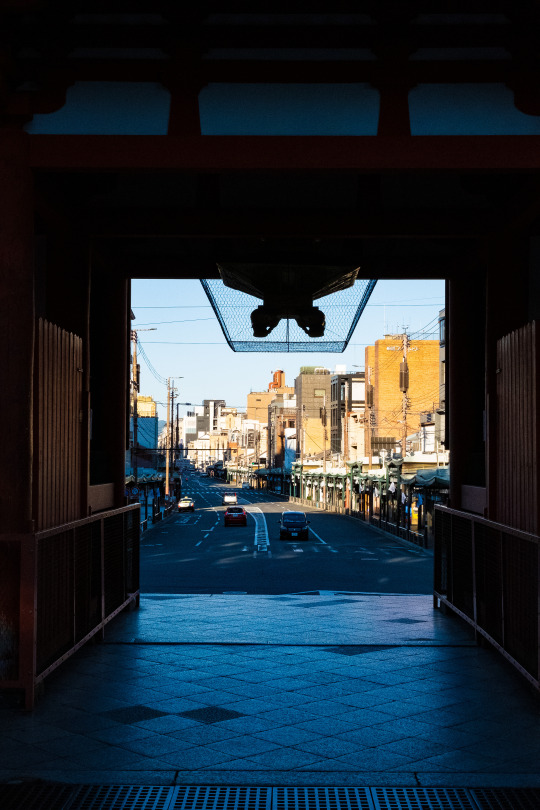
Looking out into Shijo-dori
Yasaka Shrine, Kyoto
October 18, 2022
3 notes
·
View notes
Text
KYOTO
Shijo West
- Kohchosai (bamboo items)🪑
- Weekenders Coffee☕️
- Daishodo woodblock prints🪑***
- Isoya (veggie focused izakaya) 🍗**
- Bungalow (yummy izakaya) 🍗**
- Bar rocking chair 🍺
- Calvador 🍺
- Ki no bi🍺
- Nishiki market / Aritsugu 🔪
- Nishiki market / Kitchen shop Kawataki🪑***
- Mumokuteki (Large homewares shop) 🪑
- Muku / teramachidori (ArchDigest reco) 🍵
- Wakabaya (ceramics) 🍵
Gion
- Shinmonzen-dori (antique shopping) 👺***
- Maiko antiques 👺
- Kishin kitchen (Japanese breakfast) 🍗
- Bar Talisker 🍺
- Birdland (piano) 🍺
- Kyoto Handicraft center 🪑***
- Black cat lemonade 🍋***
- Jazz spot yamatoya (12-10p)🎵***
Philosophers path
- Kanaamitsuji (metal strainers) - Kodaiji temple🪑
- Kiso artech (wood items) 🪑
- Brown eyes coffee☕️
- Suirokaku water bridge🏛️***
- Ofuda👺👺👺👺👺👺👺👺👺👺👺👺
Kyoto station
- Kurasu (Coffee) ☕️**
Sannenzaka
- Otowa Waterfall (longevity spring water) 👺***
- Kiyomizu dera (large wooden structure) 🏯
- Arabica ☕️
- Nittodo☕️🪑***
- Unir coffee (has flan, cakes) ☕️
- Koma Gallery Coffee☕️
- 高台寺中谷本店 (chinaware)***
- Minatoya Yurei Kosodateame Honpo (spooky candy) 🍬
- Ichinenzaka street
- Kongoji temple
#
TOKYO
Daikanyamacho / Nakameguro
- Tempura Motoyoshi Imo (micheline star takeaway tempura sweet potato)🍵 ***
- Drip☕️ **
- Jasmine Yi Jiang Nan (Chinese)🍗**
- Monkey Cafe & Boutique ☕️*
- Café Façon Roaster Atelier (small roaster) ☕️ *
- Debris (event venue, check calendar) 🎵
- Maison Kitsune (nice interior) 👚
- Minä Perhonen (nice interior)👚
- Udatsu Sushi🍗*
- Kinto (tableware)🪑
- Tableaux (jazz lounge) 🎵
- 3110NZ (modern gallery)
- Tam (used clothes)👚
- Lanterne (modern izakaya)🍗
Harajuku and Omotesando
- Binowa cafe (canneles)☕️ ***
- Funktique - vintage👚***
- Ragtag - vintage👚***
- Kinji - vintage👚**
- Rakeru - omurice🍞***
- Cafe Mameya ☕️***
- No.501 - natural wine shop 🍺***
- Roastery ☕️
- Local coffee stand ☕️*
- Cafe Reissue ☕️** (3D latte art)
- Double Tall - near hotel ☕️
- Pain Au Soirire - near hotel 🍞
- Chatei Hatou ☕️
- Chachanoma 🍵
- Cibone + HAY🪑***
- Spiral Market🪑***
- Found MUJI🪑***
- Nihonbashi Kiya (Tokyo plaza Shibuya)🔪***
- Kihara🪑***
- Grapevine by K3 👚
- Boutique Takenoko 👚*
Aoyama / Roppongi
- Aoyama Farmers Market (Sat+Sun 10-4)🥕***
- Jazz House Alfie 🎵 **
- Sakurai (Tak) 🍵*
- Spiral (Tak) *
- Down the Stairs (Arts & Science)🍗*
- Cusavilla (italian, lunch available) 🍗*
- Butagumi 🍗
- Kyu Yasui cocktails🍺
- Bunon (japanese vibe) 🍺
Ginza
- Chuo Dori (no cars Sat+Sun 12-5p)***
- Okuno Building (many galleries)🛒***
- Yurakucho food stalls (below station built into brick arches) 🍗**
- Chukasoba Ginza Hachigou (French-trained ramen) 🍗**
- The Stand (Yurakucho) 🍗**
- Heart's Light Coffee ☕️*
- Dover Street Market 👚*
- Daimaru Department Store 👚
- Itoya 🛒
- Chanoha - in a mall 🍵
- Tachigui Sushi Akira🍗*
- Shibire Noodles Rousoku-ya (Chinese-Japanese ramen) 🍗
- Higashiya (sweets and tea) 🍵
Akihabara
- Chuo Dori (no cars Sunday 1-5p)
- Tonkstsu Marugo (pork cutlet)🍗
Misc
- Gotokuji temple (lucky cat temple) ⛩️**
- Manhattan (Asagaya) tiny jazz bar with Thursday 19h jam sessions 🎵**
- Gout de Jaune 🍺
- Vineria Il Passaggio (bread with faces) - very small 🍺
- Tanakaya Liquor Store🍺
Shibuya
- Shin-pachi Syokudo (breakfast)🍗 ***
- Heart's Light Coffee ☕️***
- Nojima (yellowtail bowl) [Kei]🍗**
- Body & Soul Club 🎵**
- Ahiru Store 🍗🍺*
- SG club🍺***
- Libertin (natural wine) 🍗🍺
- Fuglen ☕️**
- Tamotsu (ramen) [Kei] 🍗
- Watarium museum (contemporary) [Tak]
- Nezu museum (traditional) [Tak]
Shinjuku
- Edomae SS (4000 JPY counter sushi) 🍗***
- Bar Benfiddich 🍺***
- Akomeya 🛒**
- Jazz Bar Samurai 🎵**
- Bar Hermit 🍺*
- Zoetrope 🍺
- Don-Don Yakiniku 🇯🇵 *
- Jazz SPOT Intro🎵 *
- Shinjuku Pit Inn 🎵*
0 notes
Text

I went to "Sarada No Mise Sancho" that I've been interested in for a long time.
Sancho is a long-established western restaurant in Kawaramachi, Kyoto (Second restaurant is in Fushimi, Kyoto).
I went there just in time for the opening time of 11:30, but there was already a line!

After waiting for about 40 minutes, finally I was able to go inside.
As soon as I opened the door, I saw chefs cooking and people enjoying their lunch🥺✨


We ordered "Terikoro Steak Lunch (Teriyaki Steak and Crab Cream Croquette) " and "Teritama Burg Lunch (Egg Teriyaki Hamburger Steak)" and extra Fried Shrimp.
Both of dishes comes with salad, rice or bread roll.
The steak meat was tender and hamburger was juicy, Fried foods were crispy🤤🤤🤤💕
The salad looked a lot, but the dressing was delicious and went well with the food, so it was gone in an istant! (You can also order a salad on a separate plate)
The restaurant is small and crowded, so it's not a relaxing atmosphere, but I really recommend you to try when you have any chance to come to Kyoto!
--------------------
【Restaurant Information】
🍽 Salad No Mise Sancho
📍 572 Nakanomachi, Urateramachi-dori, Shijo Agaru, Nakagyo Ward, Kyoto City, Kyoto Prefecture
🕚11:30-22:00 (21:30 Last order) 15:00-17:00 Closed
📅 Regular Holiday : Wendesday
☎️ 075-211-0459
-------------------
A little something extra🤳




1 note
·
View note
Text
1920 Japan. Real and Imaginary
No city I have so far seen in the Far East has in it the makings of so fine a world metropolis as has Kyoto. Its wide avenues, its leisurely spirit in which dreams count for as much as profit, even its people, Japanese like all Japanese, are still, it seems, a thousand ages ahead of the others in real civilization. Kyoto plays its part—not to charm, which is such a deceptive thing to do (and Kyoto is no flirt), but it simply opens its doors for you to come and live there if you will. But to fawn upon you—it is too much of an artist for that.
The children play on the streets, the narrow lanes are full of busy folk, women and men sharing their labors as in no other civilized country. The restaurants are cleaner, more refined, and more truly westernized than in Kobe. Men come in for foreign meals with dignity and bearing, clean in person and refined in manner. At one of the numerous bridges which span the Kamogawa— swift-flowing water sifting the moonlight—crowds pass, cheerful, picturesque, without swagger. Two little girls with most elaborate ornamentation, almost like Christmas trees, go happily on their way. Men are slightly drunk, enjoying themselves. Then the moving-picture theater lets out a lively, lightly clad throng. The box-oflice says, “Admission for a seat Y1.” That is, any Japanese or foreigner who must have so unnecessary a thing as a seat should pay double for it. Then a Japanese addresses me in an English not to be mistaken—he lived in Nebraska for twenty years. We go to a large refreshment-place on the river bank. It is cheap, but the crowd is interesting. Some foreigners arrive—a party of poor Russians—mother and children one little girl dressed in Japanese kimono; a party of well-to-do Russians who later drive away in a limousine. This is a little picture of Kyoto life.
To look down this river on a moonlight night and see its banks alight with tea-houses in full flush of summer happiness is to wish once and for all one were a Japanese with no knowledge of other ways and customs to drag him back to dullness.
And to look toward one's left along the broad Shijo-dori, the main street of the city, is to wish one were a business man with a little shop on that spacious street with its thousands of electric eyes. No city in Japan is so well laid out, and no street so well lighted. And yet no place in the Orient is so conservative, so “unprogressive,” so satisfied with the part it has played in Nipponese life. Grateful is the seeker after peace when he comes to Kyoto.
0 notes
Text



mom visit: kyoto
december 31, 2018
>> see all kyoto 2019 posts <<
mom and i celebrated our last day of 2018 by traveling to kyoto!
the shinkansen we took was the nozomi, the fastest train on the sanyo-tokaido line. after we arrived, we spent the afternoon checking out the shopping! shijo-dori is a famous street in kyoto that’s lined with shops that run the gamut from gucci to little specialty handkerchief stores. it leads directly to yasaka-jinja, a famous brightly-colored shrine, and chion-in, a famous buddhist temple that we’ll be visiting later for joya no kane. over the river is the old neighborhood of gion, the geisha district.
2 notes
·
View notes
Photo
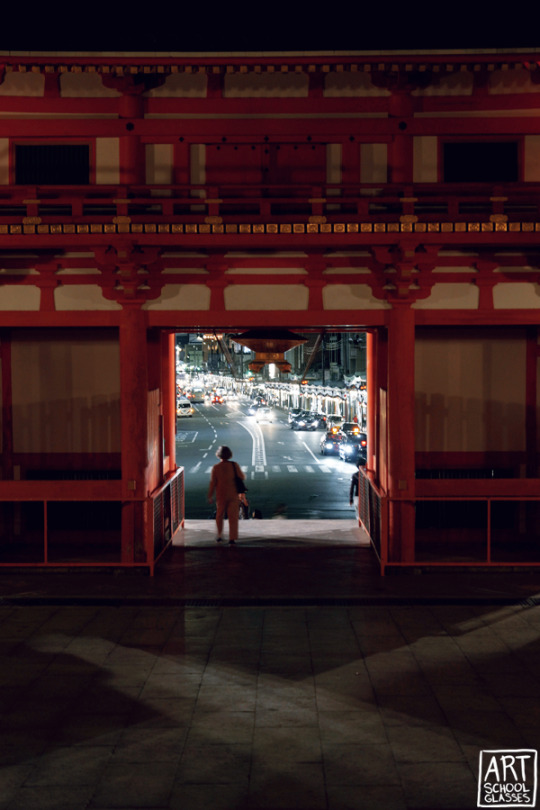
Yasaka-jinja
Kyoto, Japan
#yasaka#yasakajinja#yasaka jinja#yasaka-jinja#yasaka shrine#shrine#gion#kyoto#japan#asia#travel#my photos#shijodori#shijo dori#shijo-dori#street#city#night
16 notes
·
View notes
Text
What we’ll miss when bookstores disappear
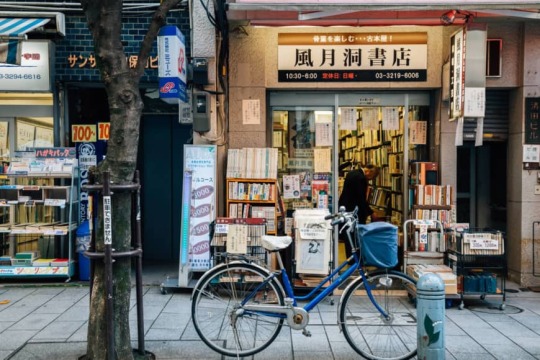
KIZUGAWA, KYOTO PREF. – The Junkudo bookstore, located on Shijo-dori in the bustling center of Kyoto, closed for good at the end of February. That was a sad moment for me and many other Kyotoites, in particular those devoted to reading and writing subjects on literature and the humanities, for whom Junkudo was a favorite bookstore.
The event appeared to symbolize the current plight of the publishing industry. It felt as though the last fortress of bookstores in Kyoto had just crumbled away.
The dwindling number of people visiting bookstores is attributed not just to the declining sale of books and magazines, but more importantly to the increasingly common practice of people buying books on e-commerce sites.
“When I was younger, what I enjoyed more than anything else was going to a bookstore and experiencing the pleasure of touching the books. Scholars in social sciences like myself expand and deepen our knowledge through the process of discovering books of true value. The closure of bookstores deprives scholars of opportunities for intellectual exploration and discoveries.”
Books have long been deemed one of the items most suited for e-commerce. Indeed, Amazon.com Inc. first came into being in 1995 as an online book distribution system.
Information on new books is publicized through advertisements by the publisher, book reviews by newspapers and other media or by word of mouth. Readers place online orders for the book based on such pre-publication information or for their own reasons. Some may have liked authors’ previous books and place orders for new ones as soon as they’re out.
READ MORE
3 notes
·
View notes
Text
theres this breakfast joint thats a quick detour between school and my apartment and they make really good pancakes and potatoes but they dont let you order pancakes in increments of less than 5 which sucks because thats way too many fuckn pancakes dude. not to mention ive still got the potatoes to deal with afterwards. it harms me. truly. it does 10 physical damage and that sucks.
basically what im saying is if anyone wants some pancakes come stop by the breakfast place on shijo-dori and you can have 3 of mine.
203 notes
·
View notes
Photo
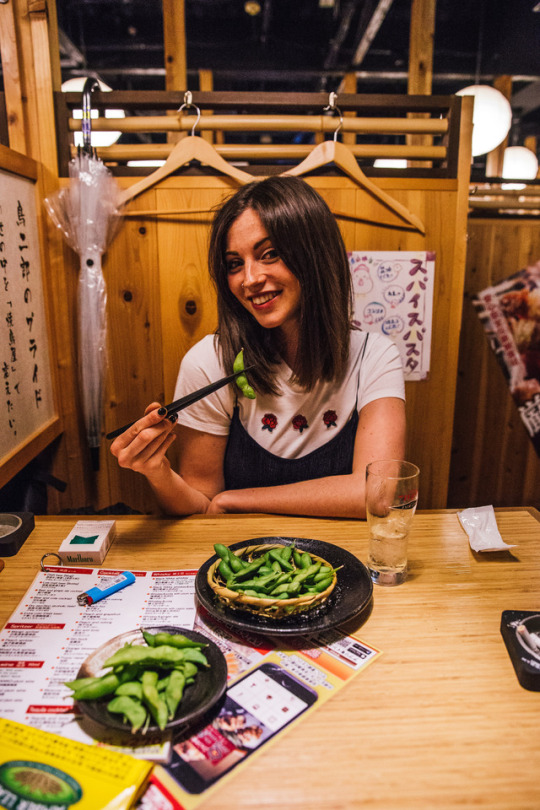
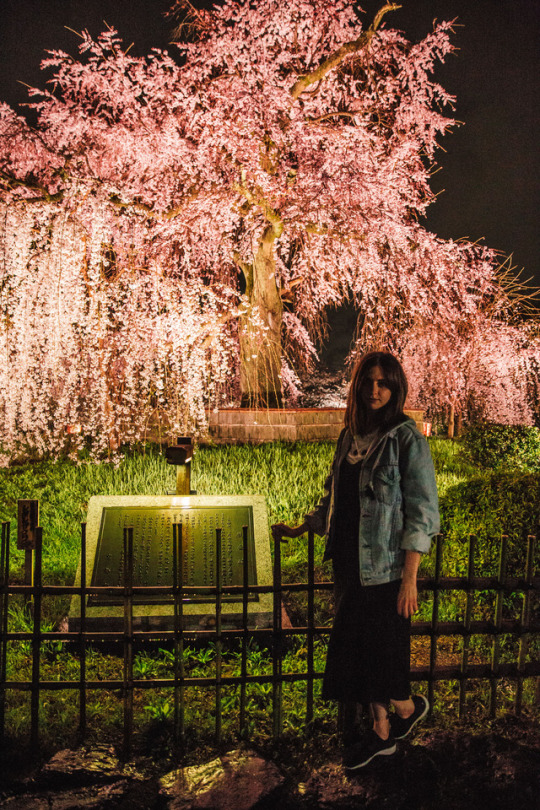
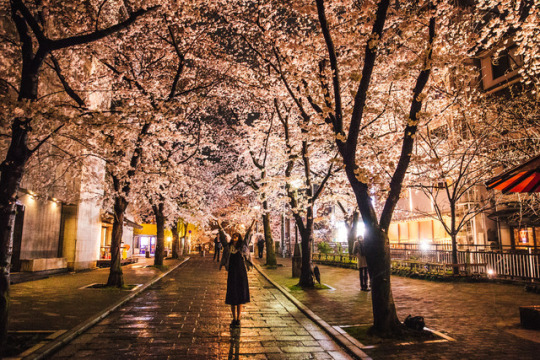
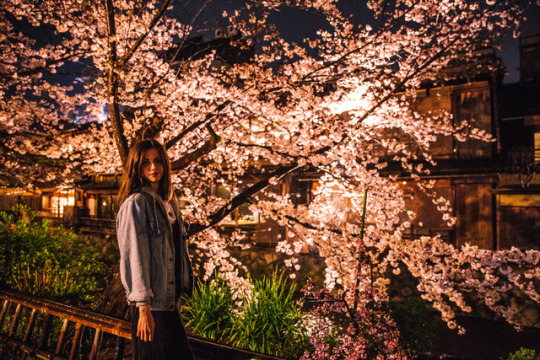


Thursday 6th April 2017. 19:00 Kyoto Japan.
This evening I met up with my friend Megan. I’ve known Megan since I was about 16/17 years old but I haven’t seen her for years! She was in Japan travelling alone and was staying in Kyoto for 6 days so we decided to hang out!
It was so nice to see a familiar face and to hear the scouse accent in person again haha. I took Megan to my favourite Omu Soba + Okonomiyaki shop in Sanjo. Afterwards we went for some drinks and edamame at a Torikizoku in Sanjo then walked down the Gion Canal and up to Maruyama Park to see the cherry blossom! It was a really lovely evening (despite the pouring down rain lol).
This was my first time in Maruyama Park (円山公園). It is a public park next to Yasaka Shrine in the Higashiyama District. In the first half of April, when the cherry trees are in full bloom, the park becomes Kyoto's most popular and most crowded spot for cherry blossom viewing parties (hanami). The centerpiece of the park is a tall Shidarezakura (weeping cherry tree), which gets lit up in the night.
#kyoto#Kyoto temple#Kyoto Japan#kyoto city#kyotojapan#higashiyama#maruyama#maruyama park#gion#sanjo#sanjodori#sanjo dori#sanjo bridge#Gion Shijo#cherry blossom#blossom#weeping cherry tree#hanami#Japan#japanese#japanese culture#japanese garden#Japanese style#gion canal#explore#explore asia#explorejapan#explore japan#explorekyoto#document
1 note
·
View note
Note
Can you please explain which streets are considered part of the Pontocho geisha district? Is (or was) Kiyamachi part of it?
Pontocho is located on Pontocho-dori that runs from Ryōma-dori in the north to Shijo-dori in the south. Kiyamachi-dori runs parallel to Pontocho-dori and is not a part of Pontocho proper.
13 notes
·
View notes